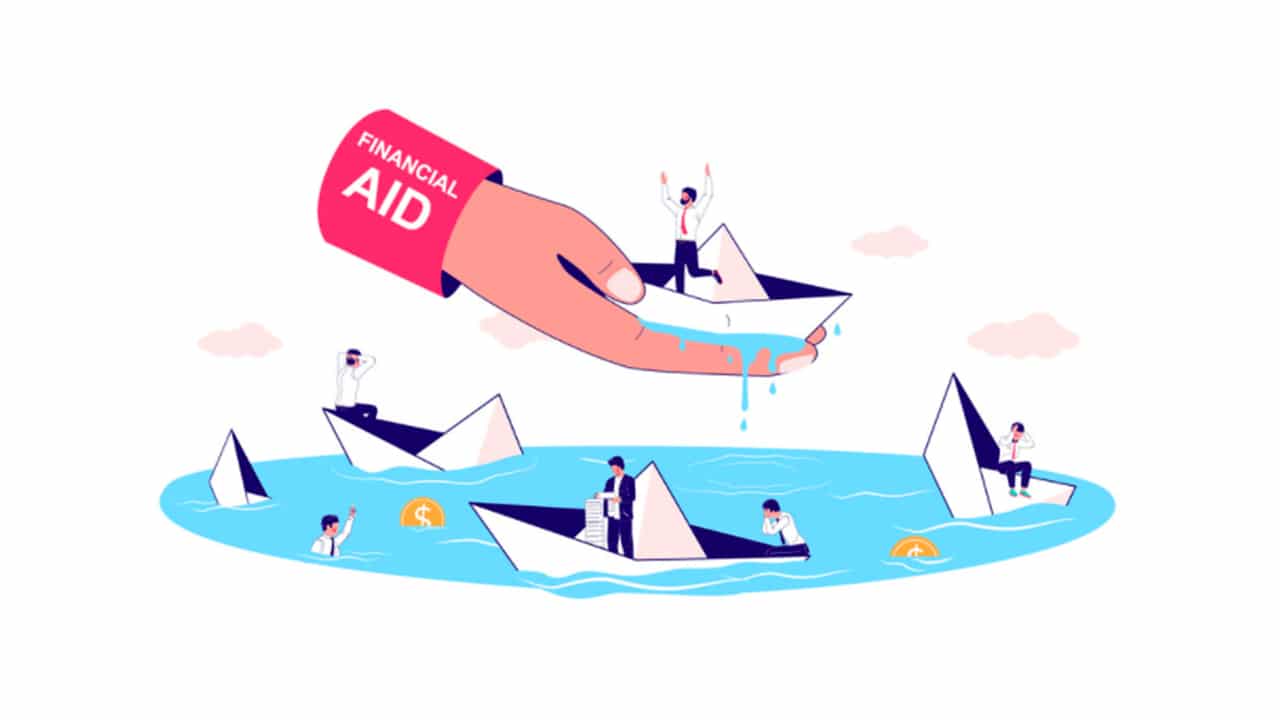How to Pay Off Six-Figure Debt Without Losing Your Mind


When you’re staring down six figures of debt, it can feel like you’re carrying an invisible weight no one else sees — but you feel it everywhere: in your sleep, your health, your relationships, and especially your sense of hope.
If you’ve tried budgeting, cutting expenses, and making sacrifices only to see slow or nonexistent progress, you might be wondering if it’s even possible to turn things around.
It is.
And you don’t have to do it at the expense of your peace of mind.
In this guide, you’ll learn how to pay down large debt while protecting your health, your relationships, and your sense of joy. These are the same principles my household used to pay off $220,000 in student loans — but more importantly, they’re strategies you can tailor to your life, your income, and your priorities.
Debt isn’t just a financial burden; it’s also an emotional one.
You might feel guilt for “letting it get this far,” shame that others your age seem to be moving ahead while you’re catching up, or even anger at past decisions (yours or someone else’s) that led you here. This emotional load isn’t separate from the financial one; it’s woven into it.
That stress can creep into everything:
If your current approach only focuses on numbers, it’s incomplete. A complete plan also makes space for healing, clarity, and emotional resilience. Paying off debt without losing your mind means learning to support your mental health as much as your bank balance.
You’ve probably heard of S.M.A.R.T. goals (Specific, Measurable, Achievable, Relevant, and Time-bound). They’re powerful, but only if they’re yours.
If your debt plan is a copy-paste from someone else’s journey, it may not account for your needs, values, or non-negotiables. For example, if a popular influencer’s method says to cut all “non-essential” expenses but you rely on therapy or a gym membership for your mental health, following their plan might push you into burnout.
Instead, create S.M.A.R.T. goals that are both financially sound and emotionally supportive.
Example:
Remember: S.M.A.R.T. goals only work if they work for you.
Here’s something no one tells you early on: you can’t cut your way to peace.
If you’ve been obsessively checking your debt balance, hoping for the numbers to drop faster, you know how exhausting it can be. That hyperfocus can lead to short-term bursts of effort followed by long stretches of burnout.
Instead of asking, “What do I have to sacrifice?” try:
“What do I need to thrive while I do this?”
That might mean:
When your plan includes life-giving activities, you’re more likely to stay consistent for the long haul.
A cluttered space can mirror (and magnify) a cluttered mind. Simplifying your surroundings helps you feel more in control, and control is exactly what debt anxiety tries to strip from you.
Try small wins like:
Then look beyond your physical space:
Your environment can either drain you or fuel you; set it up to work in your favor.
Burnout is real, and paying off six-figure debt without fuel in the tank is a recipe for quitting.
Your health isn’t a luxury, it’s a requirement.
And don’t isolate yourself. If you’re surrounded by people who don’t understand or support your goals, it can chip away at your motivation. Seek out voices and communities that “get it,” whether that’s local friends, online groups, or podcasts hosted by people who share your lived experience.
When you feel seen and supported, you’re far more likely to keep going when the process gets hard.
There’s no one-size-fits-all debt payoff plan. You can learn from others, but the strategy that works is the one that accounts for both your financial reality and your emotional capacity.
Instead of asking, “What’s the best method?” try asking, “What’s the best method for me right now?”
Here are three common strategies, with their pros, cons, and emotional considerations, so you can choose the one that aligns with your life.
What it is: List your debts from highest interest rate to lowest, and pay them off in that order. You make minimum payments on everything, but throw any extra money toward the highest-interest debt first.
Why it works:
Things to consider:
Best for you if: You’re motivated by numbers and long-term savings more than quick emotional wins.
What it is: List your debts from smallest balance to largest, ignoring interest rates. Focus all extra money on the smallest debt while making minimum payments on the rest once that’s paid off, “snowball” the freed-up payment into the next debt.
Why it works:
Things to consider:
Best for you if: You’re motivated by quick progress and need early wins to stay consistent.
What it is: Combine multiple debts into one loan or credit account, ideally with a lower interest rate. This could be through a personal loan, a balance transfer card, or a consolidation program.
Why it works:
Things to consider:
Best for you if: You’re overwhelmed by juggling multiple payments and want to simplify while possibly lowering costs.
Final takeaway for Step 6: The “right” strategy is the one you’ll stick to. You can even mix methods, start with the snowball for quick wins, then switch to avalanche for maximum savings. Your journey is yours to design.
One of the most common traps is waiting until you “know enough” to start.
Clarity doesn’t come from another podcast episode or YouTube binge, it comes from action. Take the first step, see how it feels, then adjust.
You don’t need perfection. You need a rhythm that works for your life.
Sometimes the smartest move is bringing in extra support:
Asking for help isn’t weakness, it’s wisdom. It means you’re choosing strategy over struggle.
You can pay off six-figure debt without losing your mind, your relationships, or your joy.
It’s not about perfection. It’s about consistent, sustainable progress that honors both your finances and your well-being.
So ask yourself: What would life feel like without this debt? What freedom would that give you?

Tax refunds in early 2026 could be $1,000 to $2,000 larger for many households due to retroactive tax law changes....

Why does it feel like large companies always get the upper hand? Maybe it’s the long contracts with fine print,...

What can you do if you can’t afford college? Maybe the financial aid award wasn’t enough, or you only want...